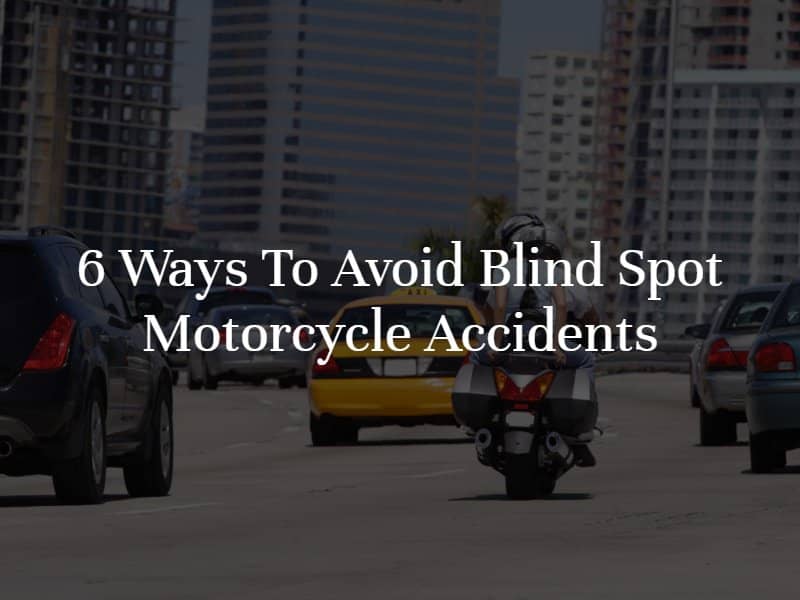
Blind Spots and Motorcycle Accidents
All drivers have heard of blind spots. We learn about them early in our driver’s education courses and in the driver’s manual. Blind spots are areas on the road that cannot be seen by a driver when they are looking out their side mirrors, rearview mirror, or windows in a normal situation. In order to see in a blind spot, a driver has to physically turn their head and look in that direction.
One of the unfortunate realities of operating motorcycles is that these vehicles are not as large as passenger cars. This allows them to fit more easily into the blind spot of a passenger vehicle, whether that be a sedan, a pickup truck, an SUV, or another type of vehicle.
Unfortunately, blind spot accidents can result in severe injuries for motorcyclists. If a vehicle driver fails to check their blind spot before changing lanes or turning, they could slam right into a motorcycle. Some of the most common injuries caused by blind spot motorcycle accidents include traumatic brain injuries, severe lacerations or road rash, broken or dislocated bones, severe sprains or strains, spinal cord injuries, internal bleeding, significant scarring, and disfigurement, and more.
Avoiding These Blind Spot Accidents
If you are a motorcyclist, there are six steps that we think you can take to help eliminate any possible blind spot accident on the roadways of California. We want you to stay safe, and staying safe often means taking preventive measures such as:
- Completely avoiding vehicle blind spots. The number one way to avoid blind spot accidents is to do everything possible to stay out of another vehicle’s blind spot. We always recommend that motorcyclists ride in front of or behind a vehicle, even if the vehicle is in another lane heading in the same direction.
- Defensive driving. Defensive driving tactics are crucial. Motorcyclists must be continuously aware of their surroundings. This includes the areas directly in front of and behind them, as well as beside them. Motorcyclists should anticipate other drivers’ actions.
- Wearing brightly colored clothing. If motorcyclists wear lighter-colored clothing, this can decrease the chances that a driver would not see them. There are many ways for lighter-colored clothing to be incorporated into a motorcyclist’s outfit. This can include lighter clothing as well as reflectors worn on jackets or pants.
- Leaving headlights on. Motorcyclists can improve their visibility if they leave their headlights on at all times, even during the daytime and when it is sunny out.
- Riding well behind other vehicles. We recommend that motorcyclists leave at least 20 feet in front of themselves and other vehicles on the roadway so that they have enough time to react to dangerous situations that could arise.
- Passing vehicles more quickly. When motorcyclists have to pass other vehicles, we recommend that they do so as quickly and safely as possible and avoid riding inside of another vehicle’s blind spot.

